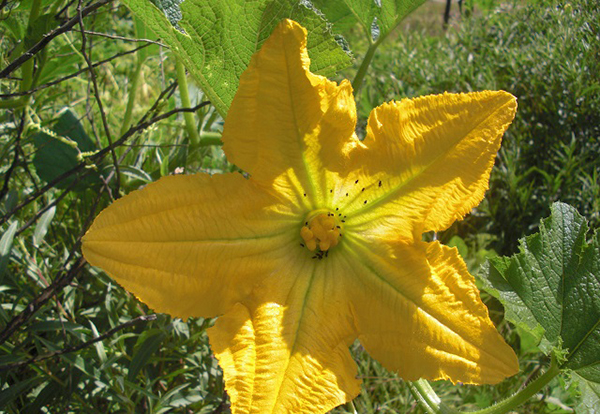Fostering Native Vegetables from the Sierra Tarahumara
Organization: Asociación Nacional para la Innovación y Desarrollo Tecnológico Agrícola (ANIDTA)
Location:
Work will be carried out in two communities in the Sierra Tarahumara (Copper Canyon): Norogachi in the municipality of Guachochi, and Gumisachi in the municipality of Bocoyna. The experimental greenhouse will be set up at Gumisachi, and the biointensive beds will be installed.
Country: Mexico
Other Organizations Involved:
- Fundación Tarahumara José A. Llaguno, A.C.
- Machi-ko, A.C.
- Rakema, A.C.
- Conanp, Sierra Tarahumara y Papigochi
- San Juanito Forestry Management Unit (Unidad de Manejo Forestal—Umafor)
- La Troje de Adobe, Sustainable Tourism and Cultural Services
- Norítari Ecotourism Complex, “A Place in the Clouds”
- Escuela Pastoral, Creel

Background
The inclusion of food plants gathered in the field in a protected farming system may reduce pressure on woodland populations and foster their conservation. Space-saving vertical farming and the use of biointensive garden beds enables an increase in the volume of food crops, thereby producing surpluses that may be transformed into agrochemical-free processed food products.
Food production and processing workshops will enable the building of producer capacities in the region. Participation in the market chain for products such as rurusí (creeping false holly), napá (lemon beebalm) and squash blossoms, will bring economic benefits to Tarahumara families, in addition to improving the region’s gastronomic offerings.
Goals
The main purpose of the project is to enhance food production (vegetables, fruits and spices) traditionally intended for self-consumption only, while promoting its penetration in the local market, increasing the production and economic capacity of Raramuri families in the Sierra Tarahumara region.
The established goals are as follows:
- To drive the sustainability of Tarahumara farm ecosystems through the production of traditional foods with commercial potential, namely creeping false holly (Jaltomata procumbens) and lemon beebalm (Monarda austromontana).
- To produce squash blossoms (Cucurbita spp.) through open-air and protected vertical growing systems, which may then be reproduced in other communities.
- To introduce alternative forms of dehydrating food.
- To develop awareness materials and organize food production and processing workshops to building communities’ capacities.
- To insert traditional products in the local market in order to increase families’ household income.
The project is aimed at community leaders, who will multiply the knowledge acquired by fostering the involvement of a greater number of families interested in producing and promoting local products whose consumption, to date, has been limited to own use.
Collaboration among local institutions and organizations will enable them to comprehensively address the issue of food safety faced on the Sierra Tarahumara.
Main activities
- Collection of seeds of species of interest, with the support of local producers.
- Growing traditional foods in protected farming systems, with biointensive beds and greenhouses.
- Conservation testing, germination, growth and density of planting.
- Adaptation of local infrastructure to enable the vertical production of squash blossoms.
- Testing of different methods for the planting, pruning and vertical growing of squash.
- Open-ended and structured interviews with Tarahumara residents.
- Testing of various materials and prototypes for the drying of traditional foods.
- Development of guidelines for each process (from harvesting to packing).
- Two training workshops on the production of the selected species, as well as food preparation and processing, with culinary demonstrations.
- Development of a list of products that Tarahumara residents in the region may grow and process for inclusion in the local market.
- Creation of food processing methodologies.
- The promotion of fair trade for Tarahumara producers and business representatives of the hotel and restaurant industries.
Results
- Creation of a local seed bank.
- Installation of two outdoor biointensive beds and two greenhouse beds, each of 10 m2, to grow the selected local species.
- Increase in the biomass of useful structures (fruit in the case of creeping false holly, and leaves in the case of lemon beebalm).
- Adoption of vertical structures or supports to grow squash and increase its production.
- Agricultural method to produce squash blossoms in reduced spaces.
- Documentary evidence including written record and video of the traditional food drying process performed by the Tarahumara people.
- Specific prototypes for dehydrating squash blossoms, creeping false holly and beebalm leaves.
- Development of a processing manual and support material.
- Assessment of knowledge before and after the workshop.
- Technical guidance for food production, preparation and processing.
- Prioritization of accepted products.
- Increased household income for Tarahumara families.
- Active involvement of members of the supply and market chain.